#HONG KONG LEAD ACTOR
Text






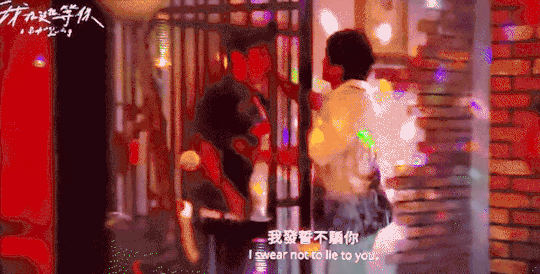

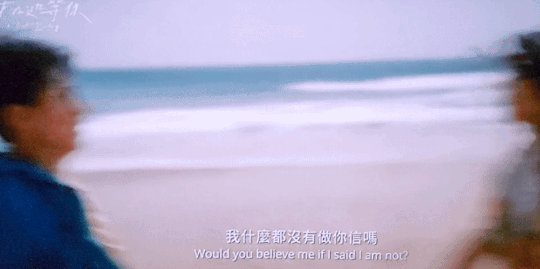

MADE IN TAIWAN
FANDY FAN
TERRANCE LAU
#MADE IN TAIWAN#CHINA-TAIWAN-HONG KONG BLOG#TAIWANESE BL SERIES#TAIWANESE LEAD ACTOR#HONG KONG LEAD ACTOR#NOT A SERIES BUT A MOVIE#MAY 10TH#PRAY WISH HOPE FOR INTERNATIONAL RELEASE#From My Main Blog: BL-BAM-BEYOND#MOVIE TRAILER HIGHLIGHTS ON MY PRIMARY BLOG (REPOST)#My GIFS#MYGIFSET#MY-GIF-EDIT#MOVIE POSTER STILL FROM WWW#BL-BAM-BEYOND FAMILY OF BLOGS
2 notes
·
View notes
Text









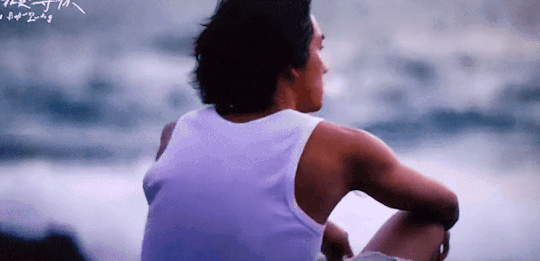
A BALLOON'S LANDING (2024, TAIWAN)
Trailer Highlights
Premiere: May 10, 2024
Platform: No Information (No International Release Info currently)
Starring: Terrance Lau as Tian Yu
Fandy Fan as A Xiang
Director: Angel Teng
MDL SYNOPSIS: A frustrated Hong Kong writer, Tian Yu, meets a Taipei street gangster, Xiang, and the two of them embark on a journey to find the Bay of Vanishing Whales, a place that leads to paradise. Along the way, they discover unexpected twists and turns and close bonds, which brings out the message that "there is always someone like you in this world who is waiting for you.
A great story. Wonderful Actors. It would be a crime if this doesn't release internationally.
@pose4photoml @lutawolf @wanderlust-in-my-soul @pharawee @absolutebl
#TAIWANESE BL MOVIE#STARRING: FANDY FAN#STARRING: TERRANCE LAU#ROAD TRIP#NO INTERNATIONAL RELEASE YET#I WANT TO SEE THIS SO BAD#I PRAY I WISH I HOPE FOR INTERNATIONAL RELEASE#My GIFS#MYGIFSET#MY-GIF-EDIT#BL-BAM-BEYOND FAMILY OF BLOGS#SHARE INFO IF YOU KNOW...I'M SEARCHING
62 notes
·
View notes
Text

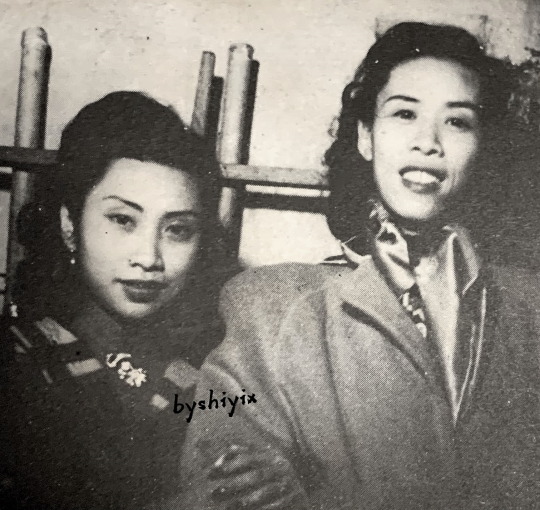
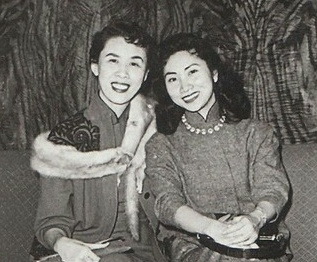
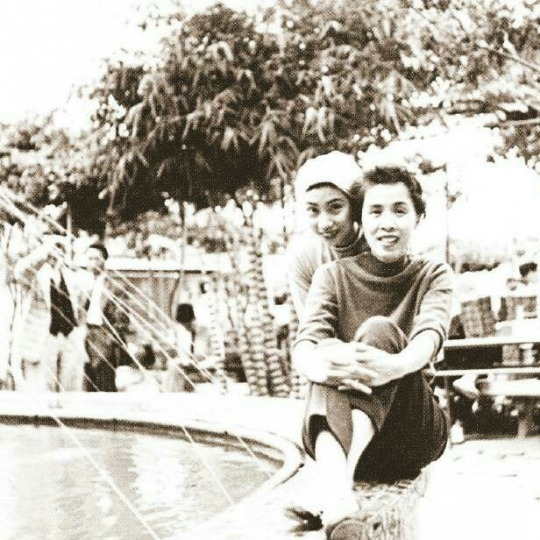

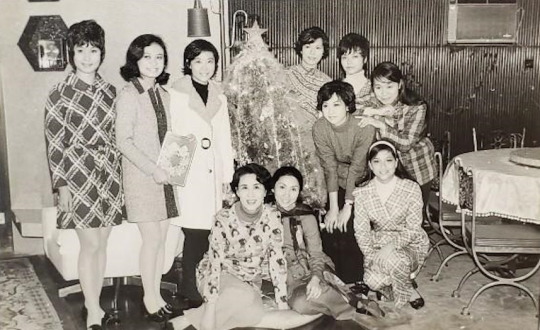
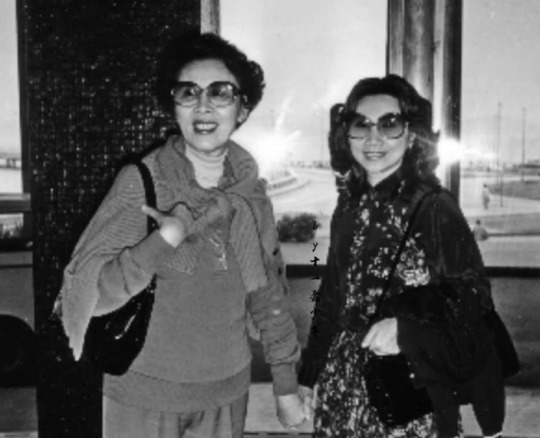

Female Queer Icons of Hong Kong // Yam Kim Fai (任劍輝) and Pak Suet Sin (白雪仙)
Photo 1: Promotional photo for 1955 contemporary movie The Model and the Car (玉女香車) (no video available) (Source: LCSD Museum Collection Search Portal)
Photo 4: Photo from Sin Fung Ming Opera Troupe's 1958 trip
Photo 5: Photo from a 1962 newspaper feature on Yam, Pak, and others at their (?) summer villa in Central, Hong Kong
Photo 6: Christmas celebrations with Yam, Pak, and their protégés of the Chor Fung Ming Troupe
Far and away the most iconic duo in Cantonese opera, Yam Kim Fai (任劍輝) and Pak Suet Sin (白雪仙) – commonly referred to simply as Yam-Pak (任白) – were famed for their partnership both on and off the stage… Click below to learn more!
Edit on 28/07/2023: Updated to link to a photo of the entrance to the Hong Kong Heritage Museum’s Pop Culture 60+ exhibit, and to add information regarding Yam and Pak's marriage status.
Iconic? How?
Yam-Pak are the face of Cantonese opera; you can't talk about the latter without mentioning the former. It's to the point where a gigantic picture of them graces the entrance to the Hong Kong Heritage Museum’s permanent exhibition on Hong Kong pop culture’s evolution across the past 60 years (“Hong Kong Pop 60+”) - they are the first thing you see upon entering!
Best known as the originators - with Yam playing the male leads and Pak the female leads - of five masterpieces of Cantonese opera, namely:
1. Princess Cheung Ping (帝女花)
2. The Legend of the Purple Hairpin (紫釵記)
3. The Dream Tryst in the Peony Pavilion (牡丹亭驚夢)
4. The Reincarnation of Lady Plum Blossom (再世紅梅記)
5. Butterfly and Red Pear Blossom (蝶影紅梨記)
(Note: Princess Cheung Ping, Purple Hairpin, and Butterfly and Red Pear Blossom were made into abridged movie versions, with the Sin Fung Ming troupe members reprising their roles from the theatre productions. Also, the "Fragrant Sacrifice" (香夭) duet from Princess Cheung Ping (movie clip) is one of - if not the most - famous songs in Cantonese opera.)
Yam and Pak were the leading pair and co-founders of the legendary Sin Fung Ming Opera Troupe (仙鳳鳴劇團; 1956-1961), which is widely held to have pushed Cantonese opera forward as an artform due to Pak and scriptwriter Tong Tik Sang’s (唐滌生) emphasis on poetic libretti and adapting source material from Chinese literature and history. (Note: it has been common practice since the 1930's for Cantonese opera troupes to be founded by key actor(s).)
They were also very active in the Hong Kong film industry in the 1950's, being paired in over 40 movies together across roughly 8 years. One of those – the aforementioned Butterfly and Red Pear Blossom (蝶影紅梨記) – is the sole Cantonese opera movie on the Hong Kong Film Archive’s 100-Must See Hong Kong Movies list (IMDB list / archived version of the official PDF). It's a well-deserved inclusion - check out this beautifully-shot dance scene.
Even their post-retirement activities had a significant effect on the industry! In the early 1960’s, they held auditions for prospective students and provided - for free - systematic, hands-on training to those who passed; Yam and Pak even hired other veterans to teach skills they personally were not as familiar with. Prior to this, apprentices were expected to learn primarily from observing their masters, and to pay handsomely for the privilege. Yam-Pak’s methods proved exceedingly effective: the Chor Fung Ming Opera Troupe (雛鳳鳴劇團; 1963-1992) starring their apprentices reigned supreme in the 1970’s-1980’s. Following this success, Cantonese opera institutes - most notably the major 1900s-era guild, the Chinese Artists Association of Hong Kong (八和會館) - started to offer systematic coaching to young hopefuls in the 1980's.
Okay, so why are they queer icons specifically?
The lazy answer is that they're queer icons because nearly all of Yam's roles were male, so Gender is involved by default, and since most hit Cantonese operas of the time were romances, that means you get to see two female actors performing being in love onscreen (and also on stage, but there aren't any video recordings from back then). So far, so Takarazuka Revue.
Female actors playing male roles in Cantonese opera
To give some context, each Cantonese opera performer specialises in one of four major role-types, and Yam was a sung (生) - i.e. an actor specialised in playing standard male roles. Female sung were fairly common in the 1910's-1930's due to women being banned from performing with men during that period, but when the ban lifted in the mid-1930's, many troupes shifted towards cis-casting. Yam was pretty much the only one whose popularity survived the transition. Just take a look at the huge number of Cantonese opera movies produced during the 1950’s-1960’s – you’ll be hard-pressed to find a female sung other than Yam, let alone one with top billing.
Happily, thanks to Yam's immense popularity, her profilic film career (over 300 movies!), and the prominence of Sin Fung Ming works in the Cantonese opera canon, there has been a resurgence in female sung which endures to this day. Two noteworthy examples are Yam's protégé Sabrina Lee/ Loong Kim Sang (龍劍笙) - a star in her own right - and Joyce Koi/ Koi Ming Fai (蓋鳴暉), one of the biggest names still active in the industry.
(Note: perhaps due to cinema being more "realistic" in nature, Yam's early movies often involved her playing female characters cross-dressing as men, including in some Cantonese opera movies. However, she received increasingly more male roles as her fame grew, and from the mid-1950's onwards she was playing male characters onscreen nearly exclusively-- even in non-Cantonese opera movies! See Photo 1 above.)
What sets Yam and Pak apart is that they were particularly known for their chemistry. Long before Sin Fung Ming's formation in 1956, the advertising copy for their first Cantonese opera movie together - Frolicking with a Pretty Maid in the Wineshop (酒樓戲鳳, 1952) - declared "Only this movie has Yam-Pak flirting on the silver screen" (source - 華僑日報 1952/05/23-26). And indeed, they were popular for their flirtatious duets: their Cantonese opera works invariably contained at least one, and such scenes made it into some of non-Cantonese opera (i.e. "contemporary") movies too. In fact, there are not one but two contemporary movies where Yam and Pak's characters are not paired up and yet still sing a duet together in such a way that their significant other(s) become convinced that the two are in romantically interested in each other - see 1952's Lovesick (為情顛倒) and 1956's The Happy Hall (滿堂吉慶) - a weirdly specific situation which doesn't crop up in the other, non-Yam-Pak movies I have seen.
Speaking of contemporary movies, let's talk about a certain plotline that keeps cropping up in works featuring the both of them and where Yam plays a woman! Six of the eleven movies which fit that criteria involve Yam's character cross-dressing as a man (a common characteristic across Yam's handful of female roles), and Pak's character falling for her. Nothing ever comes of it, of course, but, um. It was certainly a trend. Actually, even their very first movie together - 1951's Lucky Strike (福至心靈) - falls into this category.
Such storylines, and the emphasis on their chemistry, are particularly interesting given that both Yam and Pak remained ostensibly unmarried throughout. This was unusual for female performers of their stature, who tended to wed in their twenties, often to fellow-actors or wealthy men (e.g. Hung Sin Nui/紅線女, Fong Yim Fun/芳艷芬, and Tang Pik Wan/鄧碧雲)... In contrast, by the time Yam-Pak retired from the stage in 1961, they were both over 30 years old and without husbands.
Also, did I mention they were popularly believed to be living together? There doesn't seem to be any conclusive evidence either way... although it's a little strange that separate newspaper pictorials depicting "Yam at home" and "Pak at home" seem to be of the same location... however what is conclusive is that they did spent a lot of time together offstage. Pak has talked about how when they had no guests over, Yam would watch TV by herself while Pak was in the living room (source - p93), and protégé Mandy Fung/ Mui Suet Sze (梅雪詩) has said that Pak would sometimes cook for Yam at home (source - 03:53~). They would also celebrate birthdays, New Year's, and Christmas together (see Photo 6 for an example of the latter).
Shortly after Yam's passing in 1989, Pak set up the Yam Kim Fai and Pak Suet Sin Charitable Foundation (任白慈善基金) to support the arts and provide welfare for the elderly. In 1996, Pak made a large donation to Hong Kong University, resulting in one of the buildings being renamed Yam Pak Building (任白樓) in thanks (source).
Thanks for reading! Please feel free to DM me or send an ask if you have any questions, or are just interested in learning more.
If you made it here, have this bonus piece of trivia - Yam and Pak were also well-acquainted with Hong Kong's preeminent queer icon, Leslie Cheung (張國榮), who was a massive fan of theirs. Sadly there don't seem to be any pictures of them before Yam's passing, but here's one of Pak (centre) having afternoon tea with Cheung (left) and his long-term romantic partner Daffy Tong (唐鶴德) (right) at the Cova cafe in the Pacific Place shopping mall.
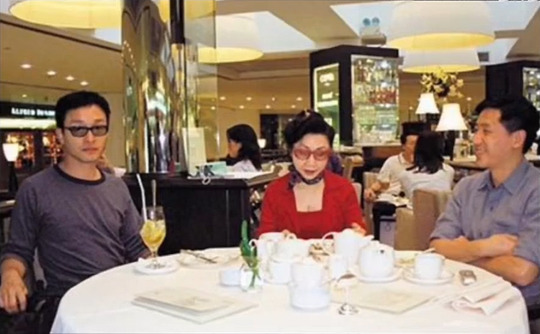
#wlw recommendations#sapphic#lgbtq#asian lgbtq#hong kong#theatre#cantonese opera#chinese opera#yam kim fai#leslie cheung#pak suet sin#yampak#yambak#pak sheut sin#bak sheut sin#hong kong queer icons#not me hastily adding tags because i keep forgetting certain ones
152 notes
·
View notes
Text
It’s a cartel in the classic economic and business sense—OPEC, not Sinaloa—a small group of connected actors working together to dominate a market that they only recently helped create. For crypto, where money is fake, value is purely hype-based, and new tokens can be spun out of nothing, it makes perfect sense. It’s a small industry, notionally worth $3 trillion at its peak in November 2021 but now hovering around $1 trillion. Many leading crypto luminaries know each other, interact on social media, trade with each other, and hobnob at small private gatherings like the Satoshi Roundtable, an annual invite-only meeting of select crypto insiders. Last spring, I confirmed via some attendees that Jean-Louis van der Velde, Tether’s elusive Hong Kong-based CEO, was at the invite-only FTX conference in the Bahamas, alongside luminaries like Bill Clinton and Tony Blair. In a public Twitter exchange, Bankman-Fried—whose Alameda hedge fund allegedly bought at least $36 billion worth of Tether in just a few years—said he didn’t know if van der Velde was there. I didn’t believe him.
Many crypto power players have histories with poker, online gambling, offshore finance, and/or other gray-market economies. A lot of them do business via so-called OTC, or over the counter, trades: person-to-person exchanges that might not leave a trace on the blockchain, crypto’s supposedly transparent public ledger. Over time, the industry, including its black-market participants, has developed its own protocols, social codes, and, as interests aligned, what amounted to an omerta. What was good for one member was often good for the rest.
40 notes
·
View notes
Note
what other stuff has become popular new fixtures in jttw adaptions?
Oh goodness that is going to be hard to pin down but from what I have seen the most popular Xiyouji adaptations have been at least
1960 Alakazam the Great - only saying this one because it is one of the first cartoon of Sun Wukong that was exposed to the West and while not hugely influential there made such an impact in Japan, leading to this version inspiring cartoon shows and even a remark movie years later. I hope that this verse keeps getting talked about and maybe a tv series about him can come around.
1961 Havoc in Heaven - this version will not die and will never die, this is the OG Wukong for so many people then and now, the defining master among Wukong's. Out of all the media, this is the most marketed and the most well-known. While not having new movies or tv shows this one is seen in commercials, shorts, toys, and designs. This Wukong's influence on things from children's clothing to even watches for thousands of dollars is mind staggering. If I would think anyone could last another 400 years with their impact of influence, it would be this Wukong, he is almost 100 since his first debut and he is still going strong. I have no doubt he will still be there in the next 40 years to celebrate his 100th birthday.
1978 Monkey (Saiyūki) - the popularity of this one wasn't in China but rather in Japan and even the dub in Europe. This is what really brought a generation of Western audiences into Xiyouji media. Went on to inspire more Japanese Saiyuki media as this was that standard with a female cast of Sanzang and a more outrageous Wukong. This one has most recently influenced the Netflix tv series Legends of the Monkey King.
1986 Dragon Ball - I feel I am kinda cheating by including Dragon Ball because it's only really the first dragon ball series that followed a similar 'journey' plot structure but it did get the franchise going and led to its future success in Dragon Ball Z. While current Dragon Ball has undoubtedly becomes its own thing with only it's main character having the same name as Sun Wukong it cannot be doubted the mass influence this media has on current culture and while no longer quite Xiyouji media, it was still started with it and should be noted.
1986 Journey to the West - this one set the standard for Wukong's live-action actors. Like sure there was plenty of life-action Wukong movies before this, so many in movies and even other tv specials but this is the most defining cast and most loyal plot following series that defined what people think when they think of Wukong, Saznag, Bajie, Wujing, and even Bailong. This was the series that didn't give Bailong a name but they were the ones that gave him the unforgettable plot of having a finance, something that has spun into SERVAL movies and even a tv series. The Wukong actor set how other Wukong actors were to play the character for years to come. So many movies use these designs in their own movies as it was so recognizable and notable. While other live-action series have come out that have tried to capture that same magic I have not seen anything nearly as nearly all-encompassing to audiences as 1986
1995 A Chinese Odyssey: Pandora's Box and A Chinese Odyssey Part Two: Cinderella - this piece in particular was revolutionary, I cannot express that enough. While it wasn't huge in Hong Kong on its debut it was near worshiped by mainland audiences about 5 years later, just through being watched through pirated VHS that grew its popularity on the early 2000s internet. It was so popular that it was given theater releases again, and even college classes over these media with how effective it was in changing Wukong's image in modern culture. He went from being an upright, stoppable hero to a man with heartache, identity issues, and being forced to being a product of the system, many things early 2000s youth related to on another level. You couldn't go anywhere not knowing "It was only when I lost her, that I felt regretful. It's the most painful ordeal in this world. If I'm given another chance I will say three words to her "I love you" If there's a need to put a time limit to this love, I hope it's ten thousand years." People who never watched the movie knew this quote. Went on to inspire the Bio of Wukong webnoval which was turned into Immortal Demon Slayer. Even argued it inspired Conquering the Demon and Demon Strikes Back.
1996 Journey to the West- one of the most controversial but beloved series with how it changes plot lines but the increased character development and character-driven narratives within the story. Dicky Cheung brought a talent that was unmatched and honesty their risks with changes in plot lines paid off greatly with how much care they put into their characters. This version was not afraid to take risks when it came to changes and performed greatly by giving the characters such deep meaningful moments and amazing humor, drama, and action. This has influenced when it comes to being a lot of people's first Xiyouji love action experience and that fun-loving hero in Wukong can be seen in other Wukong designs.
1999 Legends of the Monkey King - another generation-defining Wukong media, I find it so hard to find people that don't know him or watched him as this was and arguably still is the best animated Wukong retelling to date. The characters were lively and the actions was fierce but it gave each episode such life. At the moment there hasn't been another animated retelling that has had the same influence that this one has. At least no other tv series that I am aware of.
1999 Lotus Lantern - While not really Xiyouji retelling, this version completely rewrote Lotus Lantern media and its connection to Sun Wukong. This was the first time we see Wukong giving solo attention as a shifu to Chenxiang and before this version, you would see Chenxiang having some other teacher in live action movies or even mention of his brother and his accidental killing of a noble son. But after this movie that version has been GREATLY overshadowed with Sun Wukong being Chenxiang, leading to about three more movies and at least three tv series. with the same concept. The idea of Erlang Shen's greatest rival teaching his nephew to defeat him was so captive to audiences that it has had a stronghold of the version since.
2009 Monkey King - This one's media influence was large but more so in how it was in both merchandising and promotional material. This piece of media leads to a particular focus on Wukong in his younger years, leading to more media in the future following a concept similar. However, the largest connection this series has had is with it's spin-off series for children's education called Little Monkey King.
2015 Monkey King: Hero Is Back - another defining Sun Wukong in the animated department, not seen since 1999 with how well received and beloved this Wukong is. This was a lot of people's first movie Wukong and brought in another wave of Xiyouji fans into the series and adored. This series led to a game being created and even promises of a sequel and prequel in the works. There is a large agreement this Wukong was to inspire the Monkey King Reborn movie that came out a few years later.
And at the moment I believe that I'm going to have to stop there as these are series that I have seen prevails and while there have been great movies and shows since Imma have to wait to see which really make an impact on further media. But until then I would think that these are some of the most defining media to date that have affected other media as well!
#anonymous#anon#anon ask#jttw#journey to the west#xiyouji#sun wukong#I'm sure I'm missing a few#I wanted to put 2014 Monkey King but honestly I don't think that was as an impact despite also being some of people's first Wukong#it has two great sequels so I might change my mind but i don't know#and I was pushing it with Monkey King 2009#there is not a large fanbase for that series but I have never seen someone dislike it just more that it is fading with time#a sad fate#ask
35 notes
·
View notes
Text
ohhhh i like this newspaper headline. tho kinda deceiving cause them being on the “same stage” was a technicality. same stage, different time. but ohwell ☺️
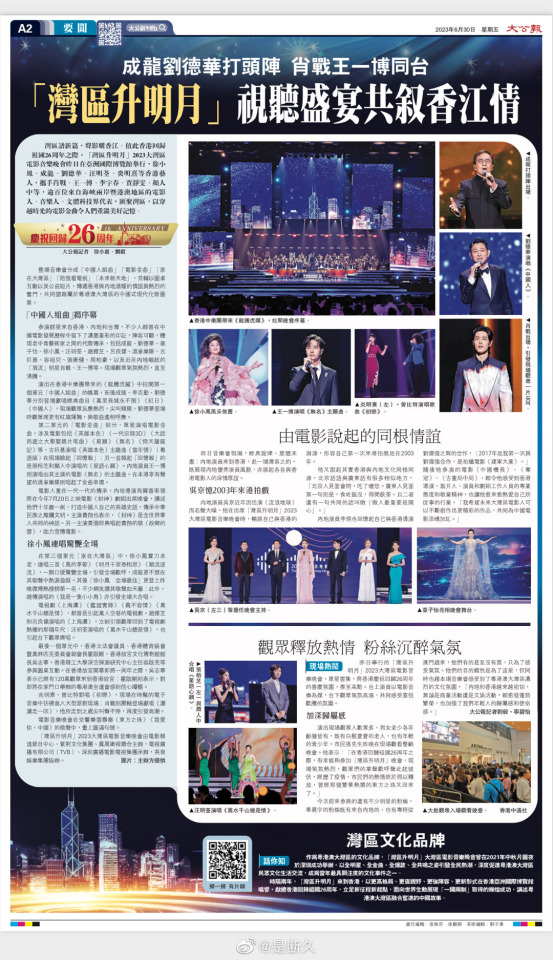
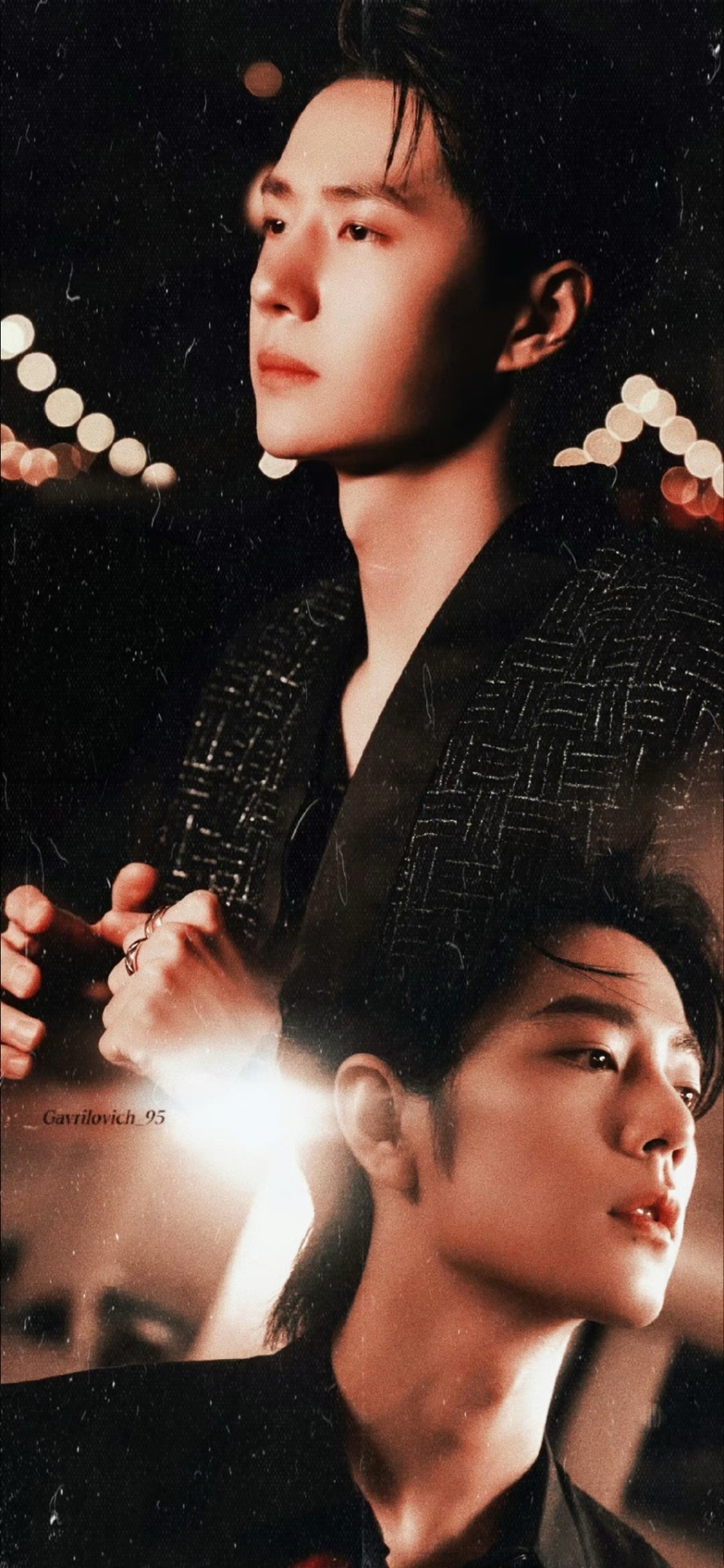
Jackie Chan Andy Lau takes the lead, Xiao Zhan and Wang Yibo are on the same stage. "Moon Rising in the Bay Area" Audio-Visual Feast to Share the Love of Hong Kong.
the article just described the show and all. I’m lowkey 🤨 cause they were both described as “top-flow” or well, top traffic stars. which is correct. but that doesn’t mean i should like it. I would have loved for them to be labeled as actors, which they both prefer.
46 notes
·
View notes
Text
European History and Sensibilities in 1899 season 1
Please forgive the length of this post -- I know I'm rambling, but I am so taken by the depth and brilliance of this show. For context, I'm an Indian immigrant to the United States, who studied American and European history and literature in the U.S. As you might imagine, I have many, many thoughts about 19th century European history and ideologies evident in 1899.
One of the really fascinating things to me about 1899 is how European it is -- obviously in terms of the nationalities of the actors and the characters, but also in terms of one of the show's leitmotifs: you cannot run from your station in life.
There were populist revolutions across Europe in 1848. They broadly failed, and the monarchs won. So in 1899, Europe was still a land of kaisers and czars (both words that come from Caesar, immediately locating 19th century Europe within a two-thousand year history of inherited status).
This is in direct opposition to the American myth, right? The idea that you can come from nothing and become the king of the world. That's a story Americans love to tell and hear, and when we Americans talk about European immigration in the 19th century, that's the way we tell the story. "All men are created equal," we say. This is where you're supposed to come if you're the "poor huddled masses yearning to breathe free." New York, specifically, is where Lady Liberty holds her lamp beside the golden door. (Lady Liberty is European, of course -- but she is French. France had a successful republican revolution in 1791, relapsed with a series of emperors, but by 1899 was a republic again.)
That's why the Kerberos is bound for New York, and not Buenos Aires or Sydney or Bombay. The American myth calls to all our friends on the Kerberos. The show begins with an American poet's words. Olek repeatedly looks at an image of the Statue of Liberty. Virginia explicitly says, "Everyone is running from something." They all hope to escape their pasts and begin anew in America, specifically, because of America's foundational mythos. Maura hopes to become a woman doctor. Tove hopes to lead a normal life with her baby and siblings. Iben hopes to establish a church rather than toiling in the fields.
But they never make it to New York. They've tried "dozens of times," Daniel tells Maura, but the ship never reaches its destination. Because New York isn't real. These European have no hope, ever, of successfully becoming the masks they wear. Angel says exactly this to Ramiro: "You cannot change the nature of things." Later on, it seems that he has had a change of heart, but his realization comes too late, and he's never able to act on his epiphany and become a better person.
Consider the stories of Ling Yi, Lucien, and Franz.
In the British colony of Hong Kong, Ling Yi tries to steal her way into a better life. The results are disastrous: she loses her best friend. Later, she loses her mother. Even though she acknowledges to her mother that she's not entitled to have dreams, she begins a dreamy relationship with Olek -- and then loses the boy she loves. By the end, she's lost everyone she cares about. There is nothing left of the better life she tried to steal from Mei Mei. The ship isn't real. The ocean isn't real. Even her beautiful stolen kimono is gone. The only familiar presence left in her life, the only person with whom she can communicate, is her pimp.
Like Ling Yi, Lucien tried to steal an identity. He returned to Paris from French Algeria trying to live out a dead man's life, and learned that the universe would not allow it. He accepts his death as soon as Eyk announces that he's heading for the Prometheus, and later tells Clemence, "I didn't get what I wanted. I got what I deserved." He understands his fate as almost a karmic balance. He stole a dead man's life, and now he has to die, too.
And then there's Franz. He's the "American" on board, in the sense that he does what a prototypical American would appreciate. He's clearly of a lower-class background and builds solidarity with the working class. He attempts to democratize the ship by empowering the underclass -- giving them arms. And when he feels that the ship's leader is not doing a good job, he seizes power to redirect the ship to its original course. It could almost be in the U.S. Declaration of Independence, which starts by justifying the American Revolution. His actions are so very American that he could almost be heroic.
Of course, the name Franz is related to France. France gave critical support to America in its revolution. Then, as I said above, it had its own bloody revolution and deposed its king. By 1899, France was a republic. So maybe it's more accurate to say that Franz is the French revolutionary, not the American.
But either way, in 1899, he's not a hero. His coup fails. Nobody shows him any respect at all, from haughty first mate Sebastian, to dignified first-class passenger Maura, right down to humble stoker Olek. The crew that was initially on his side turns against him (before he's deactivated, Wilhelm admits that Eyk had been right all along). Even the third-class passengers Franz empowered lose respect for him by the end, when he can't explain the mysterious Calling.
So, in the second half of the show, Franz returns to his proper place: under Eyk's command. (Just like France returned to imperial rule under Napoleon, even after its revolution.) Eyk is above deck, seeking philosophical enlightenment, exploring the nature of the mystery with Maura. And Franz is lower than ever, in the lowest part of the ship, performing manual labor: shoveling coal. When the storm hits, he doesn't even know until someone comes down to tell him.
In contrast, consider Olek. He never, ever subverts his station in life. Even when he's frustrated by Eyk, he does everything the captain requests. He treats everyone with deference, not even meeting their eyes, because he understands that he's lowest ranked. Even the relationships he forges -- the friendship with stowaway Jerome and relationship with prostitute Ling Yi -- are with people in his own class/rank.
Notably, Olek is Polish. In 1899, Poland hadn't existed for over 100 years; it had been divided between the Russian Empire, the Austro-Hungarians, and Prussia (later the German Empire). Olek is literally nobody, from no land.
And for knowing his place in life, he is rewarded by the universe: he ends up acting in stead of the captain, steering the ship. (Brilliantly, Olek's name comes from Alexander, as in Alexander the Great. It may not be immediately apparent to people who dismiss him as a "Polack," but Olek has rich history and leadership in his name.)
And finally, there's Eyk himself. His old-fashioned name also means "ruler," from the word for oak trees under which village heads issued their rulings. And he is the definite ruler of the ship. He is imperious and stern to start, and Maura immediately recognizes from the way that he carries himself that he is the ship's captain. He knows Morse code, and how to read naval maps, and the depth of the sea. He also knows how to read his crew and order them around.
Eyk exhibits a magnetic charisma, which works on everyone. Jerome and Ramiro, who would rather have kept their heads down and stayed out of the spotlight, end up risking their lives for him. Sebastian apologizes to him before deactivating him. Even Daniel -- for whom Eyk is a romantic rival -- helps Eyk, agrees with him publicly, and eventually just moves him elsewhere rather than deactivating him.
But as events get stranger, Eyk's behavior becomes erratic. He drinks heavily on the job. He treats officers, crew, and passengers poorly. He makes an imperious decision against the wishes of every single person on board. George III lost America for the same thing. Julius Caesar died for that, and so did Louis XVI.
But the mutiny against Eyk fails. Tove, who points a rifle at Eyk and informs him that they're turning the ship around, is also the first person to defect from the mutineers. She says to him, "Du bist der Kapitan." After the Calling, everyone again acknowledges Eyk as the captain. When the crisis of the storm begins, it's Eyk they seek first, before turning to Sebastian and Franz.
The show presents this as the correct order of things. Eyk is sympathetic, intelligent, and noble, in every sense of the word. We, the audience, love him for it. Even when we sympathize with Franz, we never agree with him and turn against Eyk.
So, the first season reifies the 1899 European idea that one ought to act in accordance with one's class status. Escaping one's station in life is impossible, and attempting to do so always leads to disaster.
(Here I would be remiss not to mention the relationship to Hinduism and Buddhism. The idea that everyone's life circumstances are a reflection of their actions in their past lives, and therefore should not be avoided or changed? That's Hinduism. The idea that the universe is an illusion? It's called maya, and it's in Hinduism and Buddhism. The idea that attachment to the illusory things of maya necessarily brings suffering, that suffering distracts you from your true self as part of atman and your goal of achieving moksha -- of being blown out of existence like a candle (nirvana) -- of achieving liberation from the cycle of birth, death, and rebirth: all of this is in Hinduism and Buddhism. It's exactly what Daniel tries to tell Maura.
Europeans in the 19th century were familiar with these concepts. Knowledge of Hinduism and Buddhism was quite fashionable not only in Britain, but across the continent, and it remained so into the 20th century. See, e.g., Hermann Hesse's 1927 German novel Siddhartha about the Buddha, or this Polish translation of the Sanskrit Ramayana from 1937.)
Of course, European history didn't end in 1899. Major shifts were on the horizon; a century of war was about to begin, reshaping Europe's map several times. European nations bit into one another, sometimes spitting each other out, sometimes swallowing each other whole.
The British empire continued to lose its global power. World War I ended Eyk's German Empire and established the Weimar Republic, setting the stage for the Third Reich. The 1917 Revolution ended Imperial Russia and established the Soviet Union. The Treaty of Paris reestablished Olek's Poland. Civil war raged in Angel's Spain. World War II began in 1937 on the Sino-Japanese front, and Ling Yi's Hong Kong was occupied by Japan. Olek's Poland was occupied by Germany, as was Clemence, Lucien, and Jerome's France.
And then the Cold War raged. Europe was split in two. America became a superpower and spread its sensibilities across war-ravaged Western Europe, while the Soviet Union did the same in the East. Eyk's Germany was itself split.
Until, finally, came the mostly peaceful Revolutions of 1989 (the same numerals as 1899!), fulfilling the populist promise of the 1848 revolutions. Round Table Talks -- beginning in Olek's Poland -- spread capitalist democracy across Eastern Europe. The Berlin Wall came down later the same year in Eyk's Germany.
(Jantje and Bo are German, too, of course. Their age and vantage point in Central Europe means they have a wonderful perspective on late 20th century European history.)
The Soviet Union collapsed in 1991, leaving America as the sole world power. Obviously, Europe is not America. To this day, America is a very libertarian country, ruled by a worship of individualism and the belief that riches and success are only a reinvention away. European countries are not ruled by this same fundamental ideology.
But in the 20th century, we Americans exported (read: forced) some of ourselves across the world, including in Europe, very often in evil ways. A lot of it was horrible and self-interested. We ruined lives. We ruined generations. We ruined entire nations.
But not all of it was bad. (Black Americans invented jazz and rock and roll, after all, and it's the latter genre that plays at the end of every episode.) And one of the things we exported was our foundational myth -- our belief -- now widely accepted in many parts of the world, including modern Europe: that it is inherently right and correct that people should chart their own destinies rather than being forced into roles determined at birth.
(Not to suggest that self-determination is uniquely American. Other cultures have this belief indigenously, of course! I only mean that we exported our own version.)
At the end of the first season, we see the same people that we've gotten to know, but in a new historical context. They no longer believe that they are in 1899; now it seems they're in 2099. They're not exactly in America, but they are in the territory that America claimed to have won spiritually in 1969, in its space race with the Soviet Union. (Of course, we now acknowledge space as a place for all humans, not for any race or nationality. That kind of unity is reflected in post-WWII organizations like the United Nations...and the European Union.)
And so I wonder if the same leitmotif will play in the next step of these characters' journey, or if the next season will reflect Europe's 20th century: changing social roles. Democratization. Mass murder and genocide. Waning empires and anti-immigration sentiments. Homophobia, transphobia, sexism, and gender equality and increased LGBTQ+ rights. Socialism and austerity.
I really hope the next season embraces the next chapter in Europe's history. If so, it promises to be a very interesting season, marked with sharp internal and external conflicts and contradictions. Because, to borrow a phrase from the American poet Walt Whitman, Europe is large, it contains multitudes.
#1899 meta#1899 theories#1899 spoilers#1899 analysis#1899 netflix#1899#sorry again about the absurd length of this post
131 notes
·
View notes
Text
Kaoru and Hong Kong Movies

X ( Long post!! )
It's been a while, but I found that Kaoru mentioned a lot of classic Hong Kong movies in this tweet.
These are the movies I used to watch when I was a kid, and I never thought I'd ever hear them from Kaoru one day, so I want to give a brief introduction to these movies. 😀
01. スパルタンX (Spartan X)
繁體中文:快餐車 / English: Wheels on Meals
Wheels on Meals is a 1984 Hong Kong martial arts action comedy film written and directed by Sammo Hung (洪金寶), with action choreographed by Jackie Chan (成龍). The film stars Jackie Chan (成龍), Sammo Hung (洪金寶), Yuen Biao (元彪), Lola Forner, Benny Urquidez and José Sancho.
In 1984, it was adapted into the video game Spartan X (released as Kung-Fu Master internationally).
The final fight between Jackie Chan and Benny Urquidez
🎥 Best Fight Scene 👇
youtube
02. 五福星 (ごふくせい)
繁體中文:奇謀妙計五福星 / English: Winners and Sinners (or 5 Lucky Stars)
Winners and Sinners is a 1983 Hong Kong action comedy film written and directed by Sammo Hung (洪金寶), who also starred in the film. The film co-stars Jackie Chan (成龍) and Yuen Biao (元彪), the latter serving as one of the film's action directors.
The film is followed by My Lucky Stars (福星高照) and Twinkle, Twinkle Lucky Stars (夏日福星), insofar as the "Five Lucky Stars" concept (福星系列) and many of the same actors return in those latter films. However, the character names and indeed their roles differ - Stanley Fung's character is the nominal "leader" of the quintet in Winners and Sinners (奇謀妙計五福星), whereas Hung's character takes the mantle in the latter films.
🎥 Best Fight Scene 👇
youtube
03. 霊幻道士 (れいげん どうし)
繁體中文:殭屍先生 (or 暫時停止呼吸) / English: Mr. Vampire
As this is one of my favorite movies, I will introduce more 😃
Mr. Vampire is a 1985 Hong Kong comedy horror film directed by Ricky Lau (劉觀偉) and produced by Sammo Hung (洪金寶).
The vampire of the film is based on the jiangshi (殭屍/ㄐ一ㄤˉ ㄕˉ), the hopping corpses of Chinese folklore (similar to both zombies and vampires).
"殭" means "to die immortal" (死而不朽) or "stiff" (about the same as "僵"), and "屍" means "dead body".
The film was released under the Chinese title 暫時停止呼吸 (literally: Hold Your Breath for a Moment) in Taiwan. This is because most (not all) of the 殭屍 can't see with their eyes, they can only tell where people are by their breathing, so if you hold your breath you won't get caught by 殭屍.
🎥 ※ This video is dubbed in Mandarin (with Eng subs) 👇
youtube
The film is set in the late Qing Dynasty to the early Republic of China (清朝末年~民國初期), that is, the late 19th century to the early 20th century, and most of the 殭屍 are wearing the costumes of Qing Dynasty officials.
(That's why, when I first read about the Qing Dynasty (清朝) in the history textbook, I wondered why people were all dressed as 殭屍 🤣)
🎥 ※ This video is dubbed in Mandarin (with Eng subs) 👇
youtube
The box office of Mr. Vampire success led to the creation of a Mr. Vampire franchise, with the release of four sequels directed by Ricky Lau (劉觀偉) from 1986 to 1992, and subsequent similarly themed films with different directors released between 1987 and 1992, with Lam Ching-ying (林正英) as the lead for the majority of them.
The film was the breakthrough success of the jiangshi genre, a trend popular in Hong Kong during the 1980s, and established many of the genre's recognisable tropes.
🎥 ※ This video is dubbed in Mandarin (with Eng subs) 👇
youtube
I highly recommend this movie!!
Also, I love the the movie song - Ghost Bride (鬼新娘).
🎥 ※ This song is in Cantonese (廣東話/粵語). 👇
youtube
04. Mr.Boo
繁體中文:半斤八両 / English: The Private Eyes
The Private Eyes is a 1976 Hong Kong comedy film written, directed by and starring Michael Hui (許冠文) and co-starring his brothers Samuel Hui (許冠傑) and Ricky Hui (許冠英) as well as Shih Kien (石堅) and Richard Ng (吳耀漢) in his second film role. Sammo Hung (洪金寶) served as the film's action director and Jackie Chan (成龍) was also a stuntman.
In 1979, when Jiahe Corporation (嘉禾公司) promoted Bruce Lee's (李小龍) kung fu film in Japan, it added "The Private Eyes" and changed its propaganda department to "Mr Boo!" as a call to action, it became a huge hit, earning a billion yen at the box office in Japan, followed by several Huh Brothers (許氏兄弟) comedies featuring "Mr. Boo!" as the title.
It is worth mentioning that Hsu Kuan-chieh's (許冠傑) character was voiced by the famous Japanese actor Kitano Takeshi (北野武). In 1981, Takakura Ken (高倉健) starred in "駅 STATION ", there are also male and female protagonists watching "The Private Eyes" kitchen fighting scenes. Japanese manga master Akatsuka Fujio (赤塚不二夫) has written the preface and Japanese lyrics for this film.
🎥 The kitchen fighting scenes 👇
youtube
#吳耀漢
繁體中文:吳耀漢 / English: Richard Ng
Kaoru mentioned 吳耀漢 in the tag because he passed away in April 2023. 吳耀漢 is a famous actor in Hong Kong, and he has appeared in all the movies mentioned above except Mr. Vampire.
※ In fact, 吳耀漢 appeared in 霊幻道士3 (繁體中文:靈幻先生 / English: Mr. Vampire III), a sequel to the Mr. Vampire series, which was released in 1986. I guess this is the movie Kaoru was referring to.
Speaking of 吳耀漢, I would like to recommend another Hong Kong movie: Rigor Mortis
05. Rigor Mortis
繁體中文:殭屍(2013) or 殭屍 七日重生
Rigor Mortis is a 2013 Hong Kong horror film directed by Juno Mak (麥浚龍) and produced by Takashi Shimizu (清水崇,the director of 呪怨 Juon). The film is a tribute to the Mr. Vampire film series. Many of the former cast are featured in this film: Chin Siu-ho (錢小豪), Anthony Chan (陳友), Billy Lau (樓南光) and Richard Ng (吳耀漢). *吳耀漢 is the 殭屍 on the poster. 👆
Unlike the usual Hong Kong comedies, the overall atmosphere in Rigor Mortis is very depressing. The whole movie is full of nostalgia and reluctance for Mr. Vampire, which reminds people of the glory of Hong Kong jiangshi movies back in the day. Personally, I think it is the best jiangshi movie of the last 20 years.
🎥 OFFICIAL TRAILER 👇
youtube
🎥 The Hallway Scene in the movie also uses the song Ghost Bride (鬼新娘), and the song is even more creepy as it slows down. 👇
youtube
--- --- ---
It's really happy to know that Kaoru has watched these movies.
💜 Thanks for reading 💜
Btw, today (2023/08/30, the 15th day of the 7th lunar month) is The Ghost Festival (中元節).
#kaoru#薰#movie#hong kong movies#香港電影#horror movies#long post#yinfu writing#twitter#youtube#殭屍#童年回憶#最有安全感的英叔#最近我才知道演殭屍的是元華
21 notes
·
View notes
Text
guys is it just me but is anyone noticing a trend in Hollywood where the betrayer is often an East Asian character or at least played by an East Asian actor or actress??
like Clemensia Dovecote in Ballad of the Songbirds and Snakes who kind of "betrays" Coriolanus by claiming his work as her own, Wong in the latest Dr Strange who leads Wanda to Wandagore, or Dr Yueh in Dune who practically brings down the whole house Artredies with his betrayal. And surely everyone knows Movies!ChoChang from the Harry Potter series.
And funnily enough they're all played by people from a vaguely Chinese background? and the people they betray are all white, though icl that could just be Hollywood being classic Hollywood but I'm starting to think that after seeing three instances of the "East Asian Betrayer" that surely this is not by chance. Surely there's something racial. Chang Chen (Dr Yueh) was born in Taiwan and Ashley Liao who plays Clemensia is also from a Taiwanese family, while Benedict Wong (Wong) is born to Hong Kong parents, putting all three actors/characters somewhat in the area of China.
and I can't help but think- okay. it's giving geopolitics, or maybe a little xenophobia? or even sinophobia?
has anyone else also noticed this trend or am I reading too much into it?
#SEND HELP PLEASE#Hollywood#dr Strange and the multiverse of madness#dr strange#marvel#american politics#dune#the ballad of songbirds and snakes#the hunger games#ashley liao#benedict wong#chang chen#im really loosing it- my english literature degree is invading my braaaaainnn#harry potter#cho chang#half blood prince#pottermore#potterheads
12 notes
·
View notes
Text
love how 80s-90s hong kong movies were just ITCHING to give their lead actor an excuse to go Dan Mode
7 notes
·
View notes
Photo
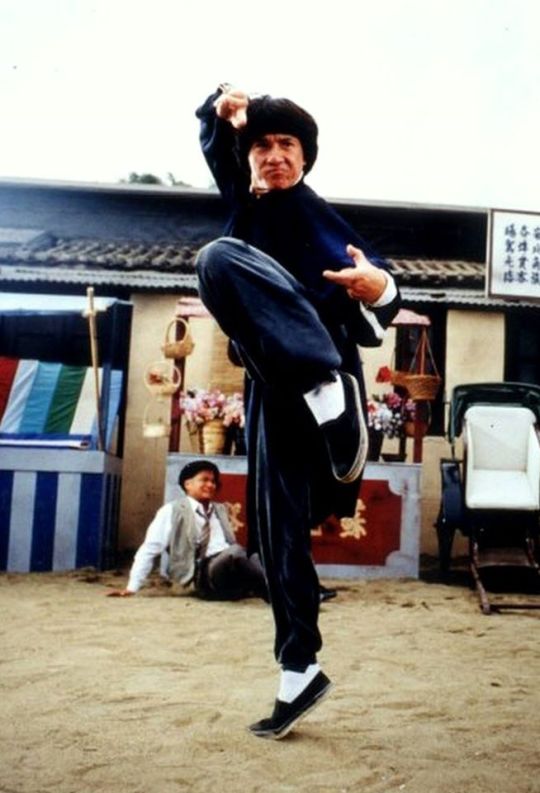
Jackie Chan as Wong Fei-hung in Drunken Master ll (1994), arguably the greatest Jackie Chan movie ever.
Produced 16 years after the original Drunken Master, this film has a much bigger budget and scope than the original. Wong Wei-hung is still a youngster this time around, still mischievous and prone to getting into trouble, not yet the sage physician and legendary hero he would become in adulthood. He lives with his father, the legendary Wong Lei-ying, one of the Ten Tigers of Canton, and his father’s new wife, Ling.
Jackie, although playing someone in his late teens/early 20s, was pushing 40 when he made this film. Legendary Hong Kong actor Ti Lung, who plays Wong Lei-ying, was 48. There were some playful remarks in the press about the two men being similar in age, but Jackie’s impishness and Ti Lung’s sternness sold the father and son relationship.
Hong Kong Cantopop star Anita Mui, known as “the Madonna of the East” played Ling. However, unlike the Madonna of the West, Anita Mui could act and had quite the film career. She starred in dramas, romances, fantasies, and action flicks before her life was tragically cut short by cancer. This time around, she brings her comedy chops, which were formidable, and pretty much steals every scene she’s in. It also helps that she’s gorgeous as well.
The film was originally directed by legendary Hong Kong actor and director Lau Kan-leung. However, disagreements between him and Jackie, particularly over the style of fighting (Lau wanted more traditional kung fu style , and Jackie wanted to....well, Jackie’s style), lead to Lau leaving the project and Jackie taking over as director. Most sources, however, do cite Lau as the sole director.
There are numerous fight scenes and action sequences that just get grander and grander as the film progresses. The first fight is between Jackie’s Fei-hung and Lau’s Fu Wen-chi, fought partially underneath a train, that illustrates Old School kung fu film fighting meeting New School, and it is a joy to behold.
Then there is a fight in a two-storey restaurant, with Fei-hung and Wen-chi taking on dozens (it seems like hundreds!) of axe-wielding assailants! And we’re only twenty minutes into the film!!!!!!
But the absolute icing on the cake, the fight scene that is rightfully held up as the greatest ever filmed, is the 20+ minute final battle in a steel foundry between Wong Wei-hung and the two main bad guys. This battle took several MONTHS (some sources say as many as six) to film, and it is well worth it. I have watched it over a dozen times, and it leaves me feeling physically exhausted every time.
If you’re a Jackie Chan fan, a martial arts enthusiast, or just love a fun, rousing, entertaining film, you need to seek this film out! Warner Archive released a version two years ago, which is your absolute best bet for viewing.
Avoid the Dimension Films release The Legend of the Drunken Master (2000). It has bad dubbing (although Jackie did dub himself), the music has been changed, and many of the sound effects - especially in the fights - have been changed. It also cuts the final 30-40 seconds of the film, because the original version is considered politically incorrect (Wong Wei-hung is temporarily brain damaged from drinking industrial/wood alcohol, and Jackie clowns around playing it for laughs).
And whatever you do, don’t turn the film off while the end credits run. That’s when many of the outtakes are featured, and you get a glimpse of just how brutal that final fight really was!
youtube
34 notes
·
View notes
Text
I would like to understand why people are pretending that the live-action Little Mermaid is going to be good when it's another terrible remake that will misinterpret and butcher the story and moral of the original like the 900 other remakes. Like, I swear there are people on Twitter making this movie their whole personality when it doesn't even look good. After Avatar, you'd think Disney would really devote money to make the water effects look impressive, but nope.
I don't really care if Arial is black, either. Disney did fuck all to defend Halle Baily from the wave racism she experienced (I believe Freeform spoke out back in 2019 and some cast members defended her, but it wasn't enough). Also, reading the behind-the-scenes, it seems like Halle was exploited on set and forced to work beyond her limits. Putting an actor in water for 13 hours a day is dangerous and not something that should be framed as resilient. It would be nice if people stopped acting as if the live-action Little Mermaid is something groundbreaking for Black women and girls when it's clearly just Disney trying to cash on diversity at our expense. They don't actually care about supporting us, based on how they treated their leading lady.
We need to stop supporting these creatively bankrupt pieces of shit. Look at the Lilo & Sitch casting, they clearly don't care honouring POC stories or valuing actors of colour. The Mulan remake was literally filmed within view of Chinese concentration camps and stared an actress who supported Chinese police brutalizing Hong Kong protesters. A lot of people like to pretend that people only have issues with The Little Mermaid, but it's a problem with all of these movies in general. It seems to be more of an issue with Disney as a company, not the actual people working on these films.
Like, I saw the live-action Lion King in theaters and now my sister wants to see this, too. Like, I genuinely think these films are bad on principle.
#non royal#text#also what's up with disney always misundstanding their own movies#they're talking about 'fixing' ariel wanting to leave the ocean 'just for a boy'#and i'm wondering if they even watched the damn original now because that's always been a misinterpretation of the movie#ariel wanted to explore land before she even met eric she wants to KNOW things and was adventurous and curious#why do they think she had her collection? the entire first part of Part of Your World is about exploration and human soceity#she was never like 'lol i see boy i wanna do leave home' that's always been a lazy critique#they did this with the lion king AND mulan AND aladdin too just not understanding the og story#they keep making 'updates' that expose them not understand the original or what made it good
15 notes
·
View notes
Text
A NEW BL MOVIE from TAIWAN
Title: A Balloon's Landing
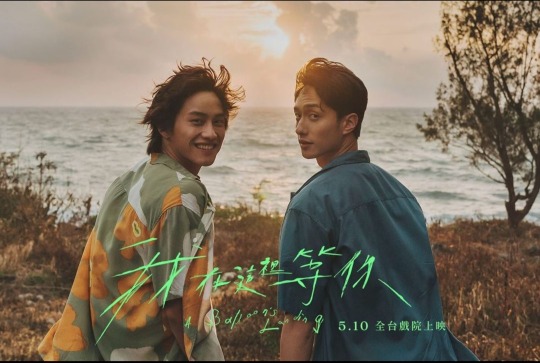
Release May 10, 2024 according to MDL but may not have an international release.
It stars Terrence Lau (a Hong Kong Actor) and Fandy Fan (BL LOVERS WILL REMEMBER HIM FROM HISTORY 2: CROSSING THE LINE)
The story goes Tian Yu, a frustrated Hong Kong writer meets street gangster Xiang and they embark on a journey to find the Bay of Vanishing Whales a place that leads to paradise. Along the way, they discover unexpected twists and turns and close bonds.
So BL Fam does anyone know about this one?
@pose4photoml @lutawolf @absolutebl @beniyo @wanderlust-in-my-soul @kingofthereblog-boysloveed @pharawee
#TAIWANESE BL MOVIE#MAY 10 2024 RELEASE PROBABLY JUST IN TAIWAN AT FIRST#FANDY FAN FROM HISTORY 2: CROSSING THE LINE#CALLING ON BL FAMILY FOR MORE INFO IF KNOWN#SHARE INFO#BL-BAM-BEYOND FAMILY OF BLOGS
45 notes
·
View notes
Text
Batfamily Action Style: Girls with Guns
While the likes of Captain Marvel and Wonder Woman are great for female empowerment and the fun spectacle of Harley Quinn and Black Widow are fun I have found myself disappointed with how the action is lackluster compared to their male counterparts. Even the more street level heros like Colleen Wing and Elektra have rather average fight scenes even though they are part of the supporting cast of the best Martial Artists in the MCU. While their fights are good they can be better. With the Batfamily finally coming to live action what can be improved?
So what source of media can the female members of the Batfamily be inspired by?
An old genre from the golden age of Hong Kong Action Cinema is the key to really capture what they can do. The Girls with Guns subgenre. Yes Madam is a 1985 martial arts film starring Karate Champion Cynthia Rothrock and current mega star Michelle Yeoh. It is considered the first movie of this kind and kicked off this type of story. Female action stars kicking ass and taking names just as well as any of the well known male actors.
If you want to see what a Cassandra Cain/Stephanie Brown scene would look like in a fight watch this movie.
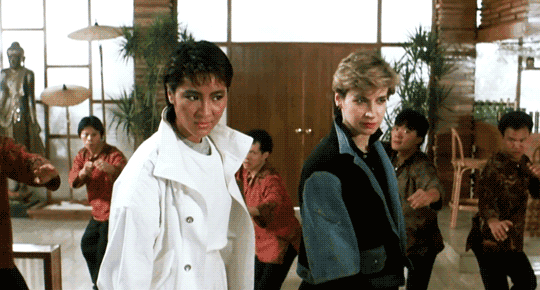
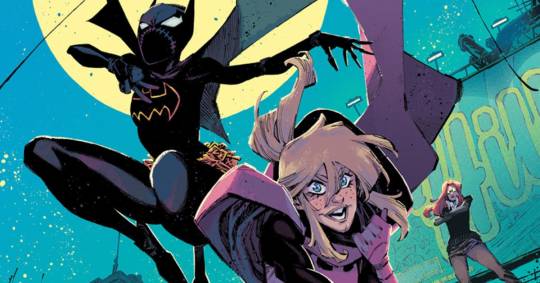
But these were not the only women defining this subgenre. Moon Lee, Cynthia Khan, Yukari Oshima and more were stars as well.

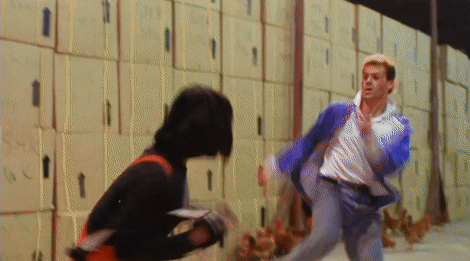
Sadly though by the 90s the subgenre died out along with the golden era of Hong Kong Cinema. A mixture of corruption due to the Triads being involved in the Hong Kong film industry, the rise of mainland Chinese movies, and the slow reunification of Hong Kong back into the Chinese government from British ownership were 3 major reasons this era died out. Combine this with the Hong Kong financial crisis due to the reunification, other competition from different Asian countries, and major American movies like Jurassic Park coming out led to the death Hong Kong 80s cinema. While luckily it recovered and made a resurgence through reimagining and artistic direction it was never the same again.
Essentially too many hands and factors controlling the industry.
The Girls with Guns subgenre sadly fell to obscurity in western audiences eyes. Never really making a splash in pop culture compared to other kung fu movies. However echos of their works can be felt since its fall in the mids 1990s. In Japan Anime was echoing the style of action. The best shows you may know is Black Lagoon and Ghost in the Shell .


While there is no correlation with the subgenre effecting other action movies in other Asia countries they have grown similar waves a female lead martial arts action. In 2008 ,Thailand had a short lived action star of Jeeja Yanin from her internationally acclaimed movie Chocolate. In 2013 in Indonesia the Raid 2 had amazing action scenes for their mute villian Hammer Girl played by Julie Estelle. Vietnam in 2019 gained similar fame for their movie Furie. It even got its own prequel directed by the first movie's main star Veronica Ngo. Finally in South Korea, while it was having its Renaissance in its film industry along came the film The Villianess. While more action oriented it was so good that John Wick 3 had to steal a scene from it.
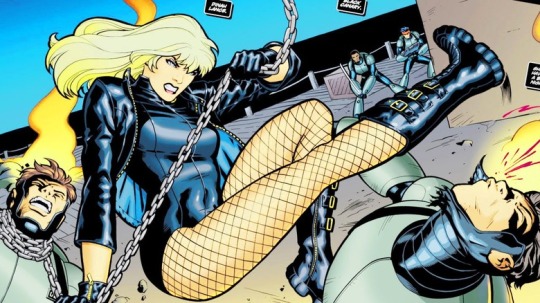

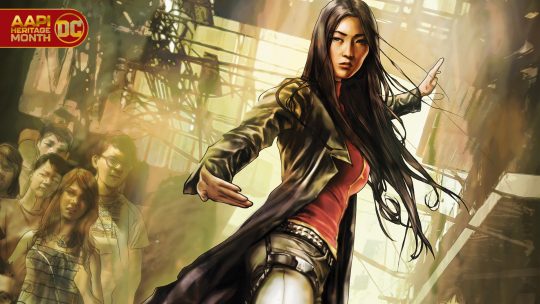

With characters like Cassandra Cain, Lady Shiva , Black Canary and more street level heros possibly making an appearence in live action, Hollywood might as well pull out all the stops for these badass women. If they do,they might want to look outward for inspiration.
#batman#batfamily#batfam#stephanie brown#batgirl#cassandra cain#lady shiva#barbara gordon#dinah lance#black canary#lady blackhawk#helena bertinelli#huntress#Batfamily Action
15 notes
·
View notes
Text
Happy Birthday 🎂 🥳 🎉 🎈 🎁 🎊 To 1 Of The Legendary & Iconic Daughter Of The Greatest Martial Artist & Movie Star 🌟 That Ever Lived
Shannon was born on April 19, 1969, at UCLA Santa Monica Medical Center in Santa Monica, California. She is the youngest child and only daughter of martial arts film star Bruce Lee and Linda Emery. In her youth she studied Jeet Kune Do, the martial art created by her father, under Richard Bustillo, one of her father's students.
She is an American actress and businesswoman. She is the only living child of martial artist Bruce Lee and retired martial arts teacher Linda Lee Cadwell, and is the younger sister of actor Brandon Lee. Through Bruce Lee she is a granddaughter of Cantonese opera singer Lee Hoi-chuen.
In 1993, Lee made a cameo appearance as a party singer performing "California Dreamin'", in her father's biopic Dragon: The Bruce Lee Story. This was followed by supporting roles in the films Cage II (1994), with Lou Ferrigno and High Voltage (1998).
In 1998, Lee played her first leading role in the Hong Kong action film Enter the Eagles, directed by Corey Yuen, co-starring Michael Wong and Anita Yuen. In the film, Lee had a fight scene with Benny Urquidez, who went on to teach her kickboxing. That same year, she guest-starred in an episode of the television series Martial Law alongside Sammo Hung.
She was the executive producer of the 2008 television series The Legend of Bruce Lee, based on her father's life, and the 2009 documentary film How Bruce Lee Changed the World.
In 2015, Perfect Storm Entertainment and Shannon Lee announced that the series Warrior, based on an original idea by Bruce Lee, would be produced and air on Cinemax. Filmmaker Justin Lin was chosen to direct the series, which debuted April 5, 2019.
In 2023, Lee guest starred in Season 3, episode 6 of Warrior, which marked her return to acting after 20 years.
PLEASE WISH THE DAUGHTER OF BRUCE LEE A VERY HAPPY BIRTHDAY 🎂 🥳 🎉 🎈 🎁 🎊
YOU KNOW HER & YOU WILL ALWAYS LOVE HER & HER FAMILY 👪
THE LEGENDARY ICON HERSELF
THE 1 & ONLY
SHANNON EMERY LEE 🐉
HAPPY 55TH BIRTHDAY 🎂 🥳 🎉 🎈 🎁 🎊 TO YOU
MS. LEE & HERE'S TO MANY MORE YEARS TO COME





#ShannonLee #DaughterOfTheDragon #BruceLee #BrandonLee #LindaLeeCadwell #ErinWren #TheLeeFamily #BeLikeWater
#Shannon Lee#Daughter Of The Dragon 🐉#Bruce Lee#Brandon Lee#Linda Lee Cadwell#Erin Wren#The Lee Family#Be Like Water 💧#Spotify
2 notes
·
View notes
Text
On 6 July 1860, a British consul by the name of George Whittingham Caine arrived at the nondescript port of Swatow, today’s modern Shantou. He “disembarked from a warship to the cacophony of a seven-gun salute” and, following the obligatory hoisting of the Union Jack [...], “triumphantly declared the treaty port of Chaozhou ‘open’.” Yet unlike other treaty ports scattered along the maritime fringes of the tottering Qing empire, the British found themselves from the outset outflanked by established Chaozhouese (otherwise known as Chiuchow or Teochew) trading communities and failed to gain a foothold in the profitable local commodity trade in rice, sugar, beancake [...].
[T]he Chaozhouese emerged from a[n] [...] ungovernable corner of Guangdong and joined the ranks of the Fujianese and Cantonese as major players in commerce and commodity production, not only along China’s southeastern littoral but across the different territories washed by the South China Sea. The story of the rise of maritime Chaozhou is set against the backdrop of state attempts to subdue and pacify [the region] [...], the emergence of colonial states in Southeast Asia, and the booms and busts of the commodity trade. [...]
[F]rom 1869 to 1948, around six million laborers departed from the port of Swatow and fanned out across the Nanyang (or “Southern Ocean”) [...]. They worked in Chaozhouese-owned gambier, pepper, rice, sugar, rubber, and fruit plantations, toiled in the gold mines of West Borneo, and served as sailors in the intra-Asian junk trade. These overseas sojourners provided a steady trickle of remittances and in the process transformed the local economy [...] [and] brought Siam, Malaya, Borneo, French Indochina, Hong Kong and Shanghai within the orbit of maritime Chaozhou.
---
The story of the heyday of maritime Chaozhou [...] is bookended by two defining moments; the ascent, following the collapse of Ayutthaya in 1767, of the half-Chaozhouese king of Siam, Taksin, and the catastrophic collapse of the global economy in the 1930s. [...] Ming and Qing [authorities] attempt[ed] to subjugate China’s unruly southeastern littoral. A series of interdictions and measures, ranging from the forced depopulation of complete coastal areas in the second half of the seventeenth century to Fang Yao’s [...] “pacification campaigns” in the 1860s, wreaked havoc but also buttressed anti-dynastic sentiments and reinforced Chaozhou’s maritime orientation. [...] These [...] campaigns triggered [...] migration of several generations of Chaozhouese men [... ]. Singapore's authorities were overwhelmed [...] [and this] worked as a catalyst for the British colonial project in the Straits Settlements. [...]
"Mexican dollars, Hong Kong dollars, French Indochinese piasters, Philippine pesos, Straits dollars and Japanese yen inundated local markets” and sustained a remittance-dependent Chaozhou economy that was always oriented towards the Nanyang and [...] removed from Beijing.
---
But the steady influx of foreign-earned capital also had its shadows. Remittances exacerbated social divides [...]. Furthermore, the success stories of some protagonists, [...] whose fabulous wealth derived from their near-monopoly on gutta-percha during Malaya’s rubber boom, are matched by uncountable, and often irretrievable, stories of suffering and hardship.
Thousands of migrants embarked penniless as “credit ticket coolies” and were shipped under trying conditions to far-flung places where they then toiled for months to earn their passage fare back. [...]
Its leading merchants and brotherhoods competed as well as cooperated with colonial actors across Southeast Asia [...] and Chaozhou-controlled business ventures were crucial to the evolution of industrial capitalism both at home and overseas.
---
Text by: Yorim Spoelder. '"Distant Shores: Colonial Encounters on China's Maritime Frontier" by Melissa Macauley'. Asian Review of Books. 5 October 2021. [A book review published online in the Non-Fiction section of Asian Review of Books. Some paragraph breaks/contractions in this post added by me.]
5 notes
·
View notes